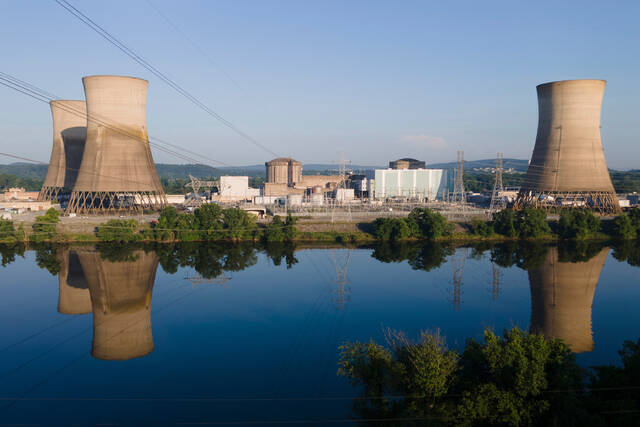The headlines are clear: renewable energy is on the rise as a source of electricity for America and coal power is headed for the door.
President Biden has set a goal 30,000MW of offshore wind by 2030, which is the equivalent of 2,500 12MW turbines, and this does not include the ever increasing number of wind turbines being constructed and planned on land.
Renewable energy, which includes solar, wind, geothermal, biomass and hydroelectric power, now produces more of the nation’s electricity (20%) than coal (19%), according to the U.S. Energy Information Administration (EIA). Since 2008, coal-powered electrical generating capacity has declined 28%, while coal-powered electrical generation has declined 61%.
The reduction in coal power is largely because of the now abundant and inexpensive supply of domestic natural gas which has allowed the U.S. to reduce its CO2 emissions to the lowest level since 1992, and per-capita emissions to the lowest level since 1950. While natural gas CO2 emissions are half that of coal per unit of energy, many have targeted natural gas energy for extinction as they have coal energy and perhaps even zero CO2 nuclear energy. Most would have to think that coal power, as well as fossil fuels in general, is on the ropes, awaiting a knockout blow from renewable energy and especially wind power.
But is this really the case?
Few places highlight this contrast between the rising wind power and declining coal power more than high in the Appalachian mountains at Mt. Storm W.Va. This is the home of two wind projects, the Ned Power and New Creek wind projects consisting of 181 2MW turbines with a combined capacity of 367MW, and the Dominion Energy Mt. Storm coal fired power plant with its 1,681MW generating capacity. The distance between the nearest wind tower and the coal power plant is less than 2 miles.
Sen. Harry Byrd built Highway RT 48 here (often referred to as corridor H) to connect northern Virginia with central West Virginia. I drive this highway often on my way to the numerous recreational offers at Canaan Valley, W.Va., which is the highest sizeable valley east of the Mississippi River.
It is quite a sight as one drives up the steep Appalachian ridge, with the turbines majestically spinning, and in the background, the coal power plant usually emitting a huge plume of white vapor from its two huge stacks. (The white vapor is caused by the plant’s sulfur scrubbers). Much of the plant’s coal arrives by truck from a mine just a few miles away while the rest arrives by CSX trains from other parts of West Virginia.
One would logically think that the coal plant’s days are numbered, doomed by an every growing number of mountain top wind turbines. It is easy to know if the coal power plant is running or not. There are two boilers for the large stack and one boiler for the smaller stack. There are only three possibilities, no emissions (the plant is not producing power), one stack operating, or both. It is not so easy to know how much power the wind turbines are producing since this is a windy place and the blades are usually spinning. Fortunately, one with the interest can find out how effective both sources of energy are using the EIA’s website, which shows every single public source of electrical generation in the nation and how much each produces monthly.
There are important differences, however, between electricity generated by wind and from coal. Wind is not generally predictable or reliable and does not coincide with energy demand that is generally more predictable based on the time of year, time of day, temperature, etc. Wind power operates on average about 35% of rated capacity while coal power plants can operate near 90% of rated capacity.
While a coal power plant’s boiler might require eight hours or more to get up to maximum power production, electricity will be available when needed as compared to wind power. The wind tends to blow more at night and less during the day, the opposite of when electricity demand is greatest. Similarly, there is less wind when temperatures are very cold and very hot, times when power demand is also very high.
The EIA website is very illuminating with regard to the energy produced by wind and coal power at Mt. Storm and the question “can wind power can replace coal power?”. In the 12-month period (May 2020- April 2021) the coal power plant operated at approximately 32% of its rated capacity. The 181 wind turbines operated at just over 21% of rated capacity. The coal plant generated 5,752GWh of electricity and the wind turbines 932GWh. It would require an additional 936 similar sized wind turbines to replace the electricity generated by the coal plant during the same 12-month period.
Power plant longevity is also an important factor with regard to cost. The Mt. Storm coal power plant began producing electricity 57 years ago in 1964. Some estimate wind power to have a 30-year life though the nearby Pinnacle wind project with its 23 turbines is having its blades and turbines replaced after only 10 years of operation and at a cost of $128 million .
It is clear wind power is not going to knock out coal power, at least not here at Mt. Storm. Wind projects and other renewables are certainly landing punches as coal loses favor as a power source in this country. Natural gas has struck the real blows, and West Virginia has abundant supplies of it. With the price of natural gas significantly escalating this year, now at $3.85 per million BTU at the Henry Hub, an increase of 55% since April, coal-generated power will gain somewhat of a reprieve due to its more favorable cost differential. The EIA estimates that coal consumption in U.S. electrical generation will increase 17% in 2021.
Geoffrey Pohanka is chairman of the Pohanka Automotive Group in Capitol Heights, Md. He closely follows energy issues that impact the transportation industry. He wrote this for RealClearEnergy.








